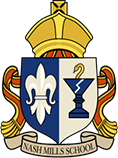Maths
Our Maths Curriculum
Led by Mrs Ofosu
Our Curriculum Intent
All our learners will:
- Become fluent in the fundamentals of mathematics so that they develop conceptual understanding and the ability to recall and apply knowledge rapidly and accurately
- Be able to solve problems by applying their mathematics to a variety of problems with increasing sophistication, including in unfamiliar contexts and to model real-life scenarios
- Reason mathematically by following a line of enquiry and develop and present a justification, argument or proof using mathematical language
- Have an appreciation of number and number operations, which enables mental calculations and written procedures to be performed efficiently, fluently and accurately to be successful in mathematics.
Our Curriculum Implementation
We follow the mastery teaching approach that aims for pupils to develop deep understanding of maths rather than being able to memorise key procedures or resort to rote learning.
The end goal and expectation is for all pupils (with very limited exceptions) to have acquired the fundamental facts and concepts of maths for their year or key stage such that by the end of it they have achieved mastery in the maths they have been taught.
Our curriculum is designed using several key resources:
- Essential Maths planning scheme by Herts for Learning which follows a set of sequences with step by step guidance covering the entire mathematics curriculum from Year 1 to Year 6.
- The Five Big Ideas in Teaching for Mastery.


Each class will have a daily maths lesson which will last for a minimum of one hour which follows the Herts Essentials Maths planning. This will be taught by the class teacher with support from the additional adults in the class.
- Daily fluency sessions during registration across key stage 1 and 2 – Essential Maths Fluency slides, Skills check questions
- Destination questions will be used as an assessment tool at the end of lesson units.
- Times tables are taught using:
- Use times tables chanting.
- Make times tables fun with songs and multiplication games.
- Make use of times tables grids.
- Use concrete resources
- Get active outside the classroom.
- Use pupil's interests to engage them with times tables.
- Times tables rock stars to be used as a homework tool to improve recall of multiplication facts.
- Stem sentences and speaking frames to articulate mathematical language
- Encourage the use of manipulatives
| Sequencing of Content Our curriculum is sequenced by ensuring coverage across all maths contents as suggested by the Statutory Framework. Our coverage also shows a progression of knowledge across year groups. Topics are revisited through short-burst fluency activities that aids the recall, retention and embedding of subject knowledge. |
| Inclusion Our curriculum follows the maths mastery approach which enables all learners access age related activities. All learners are given support through the use of manipulatives, scaffolded activities and adult or peer support. |
| How we add richness through discussion and cultural capital Our curriculum expose children to reasoning and problem solving questions using different representations and variation in questioning. We teach the children to see Maths in cross-curricular areas such as Art and Design, Design and Technology, Computing, Science, History and Geography. |
| How this subject supports our Christian vision Our curriculum encourages all children to be deep thinkers and also to respect the views of their peers as they work independently, in groups and or when they use different methods of calculations to solve maths problems. |
Our Curriculum Impact
We aim to increase the enjoyment, resilience, understanding and attainment in our school. The children will be fluent in the fundamentals of mathematics and show a deepened understanding of mathematical concepts in the recording of their work and calculations in books. The secure understanding of concrete and conceptual learning must be seen by how well the children use manipulatives to help visualise what the number means and how they draw the problems really well using bar models, part part whole models, place value grids etc.
They will have the skills and the resilience to solve problems by applying their mathematics to a variety of situations. The children will be able to reason mathematically by following a line of enquiry and develop and present a justification, argument or proof using mathematical language.




